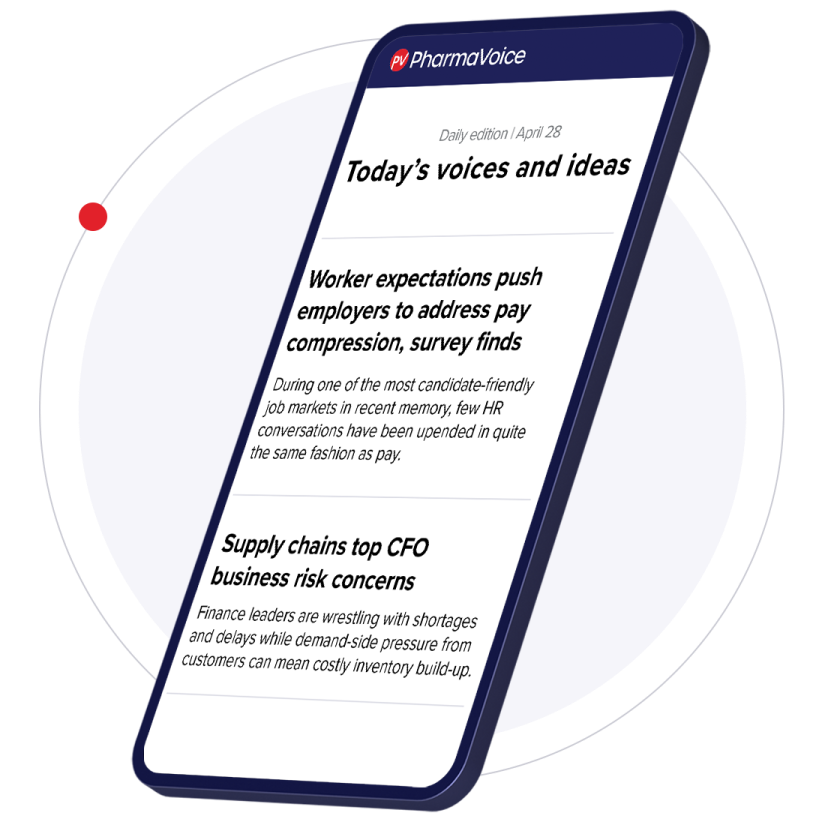Data Strategy Cracking the Marketing Code The creation of relevant marketing messages often relies on data that have been appropriately aggregated and analyzed. A well-conceived and implemented data strategy provides for a more targeted approach that ensures better results and increases return on investment. Pharmaceutical sales in the United States are projected to grow at about 14% a year. While the forecast is optimistic, the pressure to deliver peak sales faster is mounting as complexity is growing exponentially. To marketers, this means every customer transaction should be looked upon as an opportunity to gather insights and market intelligence. These critical data points become the foundation for marketing success. Sophisticated pharmaceutical companies are making the transition to information-based marketing and establishing data strategies as the infrastructure required to crack the marketing code. ìDifferent stakeholders within pharma companies are collecting significant data in ways that help them fulfill their operational needs,î says Michele Fitzpatrick, chief marketing officer of Harte-Hanks Direct. ìBut the data are not typically being collected or used in a way that helps pharma companies make better marketing decisions at the consumer level.î Ms. Fitzpatrick says while pharma companies have a lot of data about the prescribing behaviors of physician customers, they often do not have the same insights on the effectiveness of their consumer-based marketing programs. ìPharma companies do a lot of one-on-one interviews, focus groups, and surveys for market planning, but many times those data are not collected in a way that might be useful for driving marketing communications,î she says. Defining Data Strategy A data strategy is the convergence of quantitative and qualitative data, which form the backbone of data-driven marketing and patient/physician communications. A ìdata strategyî is just one component of a data-driven communications strategy. A data strategy can be viewed as a blueprint for making sound communication and marketing decisions in that it requires the establishment of clear goals. ìA data strategy requires a completely different orientation in terms of understanding technology, understanding the data, and understanding regulatory issues, for example, HIPAA,î Ms. Fitzpatrick says. ìAdditionally, there needs to be an understanding that communications are both driven by the data and are data generating.î HIPAA regulations regarding privacy, for instance, have far-reaching implications for pharmaceutical and healthcare marketers in the way they handle personally identifiable customer and prospect data. Pharmaceutical companies and their patient-data-handling partners need to establish and maintain a thorough understanding of opt-in/opt-out, consent/authorization, and permission-based marketing approaches. ìHIPAA is our friend,î Ms. Fitzpatrick says. ìHIPAA helps us make sure that weíre collecting information from patients and healthcare professionals in appropriate ways and that we secure the permission to use that information.î The importance of data is increasing, especially as it relates to the budget process, says Julian Parreño, senior VP of pharmaceutical marketing and sales at Harte-Hanks. ìWhen companies conduct trade-off analyses, how do they really know whatís driving the business without data?î Both Mr. Parreño and Ms. Fitzpatrick believe that brand managers may require additional training regarding how to evaluate and appreciate data in this way. ìThere is a strong need for education among brand managers about the strategic application of data, how they can leverage data, and why a portion of the brandís budget should be allocated to this type of marketing,î Ms. Fitzpatrick says. ìMost brand marketers have little experience in data-driven marketing. Theyíre more accustomed to crafting language and images to represent a product and hope that the right patients find the message. ìWhen we talk to brand teams about data-driven marketing, occasionally their eyes glaze over because it sounds like something the IT department should think about,î Ms. Fitzpatrick continues. ìThe concept of a data strategy has to be taken out of IT and put it into the hands of marketers.î Sales representatives have to understand the value of data to their own efforts in the field as well, Mr. Parreño says. In the past, a rep made a sales call, presented visual aids, and delivered samples as a way to drive prescriptions. ìBut now, there are almost 100,000 sales reps and 200 companies calling on the same top-tier physicians, and doctors arenít seeing reps like they used to. In fact, very few sales calls are resulting in face-to-face meetings,î Mr. Parreño says. Mr. Parreño and Ms. Fitzpatrick say developing such a strategy requires seeking out hidden clues, a discipline that consists of three steps: ï Aggregating Data: Aggregation has far greater meaning than simply collecting data from various points. This is the place where a data strategy is conceived. ï Analyzing Data: Once marketers have compiled results, they need to interpret the data back to the established objectives and apply meaning to drive the creation of relevant marketing messages. ï Applying Data: Data need to be applied to the communication plan in such a way that measurable results are delivered. It is not individual data points that make up a data strategy but the unique combination of data elements that bring the total picture into view. A well-conceived and implemented data strategy permits the highest level of relevancy and recognition in communication rather than a hit-or-miss approach, Mr. Parreño and Ms. Fitzpatrick say. In other words, a data strategy provides for a more targeted approach that ensures better results and increases return on investment (ROI). ìEveryone talks about ROI, but very few pharmaceutical marketers develop communication plans that allow them to measure ROI at the intervention level,î Ms. Fitzpatrick says. ìThey have to design the advertising so that it allows them to collect the data, and this enables them to measure ROI at the intervention level.î For instance, there are commonalities among various morbidities (heart disease, diabetes) and a sensitive condition (erectile dysfunction) for which treatment is available. Men may not respond to a survey indicating they have this sensitive condition, but they may respond to a survey that includes erectile dysfunction among other less sensitive conditions. This opens the door to communicate with a group of prospective consumers who were otherwise unreachable by traditional means. Marrying Marketing and Technology Traditionally, pharmaceutical marketers build fulfillment systems to service responses to physician and direct-to-consumer advertising inquiries and to ensure compliance with Food and Drug Administration (FDA) and Health and Human Services (HHS) requirements. By tracking those communications, inquiries, and response histories, a great deal of valuable data can be leveraged. But marketing communications can easily miss the target by not using data insights to develop messaging and not isolating media preferences to optimize communication channels. Hindrances include misperceptions about health privacy regulations, incompatible systems, data that are not shared, and data that are not maximized or optimized. With a marriage between marketing and technology, pharmaceutical marketers are able to recognize the true value of the patient and physician relationships they have. Most companies use the services of a database marketing company (or software provider) and an advertising or marketing agency. Very few of these partnerships, however, bridge the resulting gap between marketers and technical staffs inside their companies, therefore the importance of a data strategy is overlooked. Creating a data strategy, then, is the first step toward closing the gap that exists between marketing, communication, and technology to leverage all points along the data continuum and drive all marketing decisions. Start with Data-Asset and Technology Analyses A good starting place for developing a data-driven marketing strategy, according to Mr. Parreño, is whatís known as a ìdata-asset analysis.î The purpose of a data-asset analysis is to examine the source data and assess the data for quality and marketing relevance. The data-asset analysis identifies gaps between data that are currently available and data that ideally should be available for sophisticated marketing analysis ó such as patient modeling and profiling ó and to meet the marketerís objectives. It is also wise to create a program wish list, which identifies data elements that would be required to support such future initiatives as compliance and persistency programs and analytical models. By including the wish list in the strategy, desired data often can be collected sooner than anticipated and accommodated in the databaseís data model. A technology discovery will reveal whether an existing infrastructure will support a companyís communications and marketing needs and aspirations. A flexible decision-support system or customer database and tools that allow for data access, analytics, and reporting are necessary to truly leverage customer data in a multichannel environment. Quite often, infrastructure and tools already in place can be used to accomplish the goals of a well thought out data-driven marketing strategy. Applying data to solve business problems is both an art and a science and requires appropriate technology tools, human intervention, and timing. Whatís more, a thorough understanding of the pharmaceutical industry ó implications of regulations and challenges, for instance ó by data-analytics professionals is critical. Finding the Right Partner Mr. Parreño says it may be difficult for pharmaceutical marketers to build a data strategy on their own given the myriad responsibilities they already are charged with. ìThey can build a data strategy in-house if they have the right resources, a hefty market-research department, and analytics capability,î he says. With that in mind, he says it is important for marketers to find the right partner to help craft the data strategy. When selecting a partner, he says there are five important areas of expertise to consider: ï Agency experience. Can the agency/partner demonstrate how it has applied data strategies to cut costs, deliver acquisition, improve retention, and expand market share? ï Application of data strategy. How has the agency/partner helped pharmaceutical companies integrate a data strategy with other strategic goals? ï Modeler know-how. How has the modeler used innovation to unlock relevant and profitable applications hidden in customer data to drive marketing communications? ï Related services. Can the agency/partner effectively provide or work with other partners to extend related services such as market research, strategic planning, database development, creative development, and operations management? ï Marketing-IT collaboration. How will the agency/partner ensure open communication and collaboration between the pharma companyís marketing and technology departments in meeting strategic goals? During the research process, Mr. Parreño suggests that marketers ask such questions as, ìDo the partners Ö ï Understand and take advantage of new technologies appropriately? ï Understand patient and physician needs? ï Establish appropriate metrics and measure consistently over time? ï Understand market regulations and other issues? ï Monitor all developments regarding privacy, security, access, and fair-use principles? ï Provide information and referral services on privacy-related and data-security issues? It is critical to data-driven marketing success that pharma companies delve deep into data to quantify and rank the opportunities; to summarize key findings; to develop marketing recommendations based on the analysis; and, finally, to test, refine, and measure results. This will ensure the most appropriate allocation of marketing dollars and a measurable return. Those pharmaceutical companies that focus on customer-centric initiatives based on a solid data strategy will be the ones to benefit from increased loyalty, reduced costs, and an expanded share of the medicine cabinet. F PharmaVoice welcomes comments about this article. E-mail us at [email protected]. In a exclusive to PharmaVOICE, Julian Parreño, senior VP of pharmaceutical marketing and sales, Harte-Hanks, and Michele Fitzpatrick, chief marketing officer of its agency, Harte-Hanks Direct, a worldwide, direct and targeted marketing company, discuss why itís critical to a pharma companyís marketing success to delve deep into data to quantify and rank the opportunities. VIEW on data-driven marketing Although pharma companies have a lot of data about the prescribing behaviors of their physician customers, they often do not have the same insights on the effectiveness of their consumer-based marketing programs. A good starting place for developing a flexible data-driven marketing strategy is whatís known as a ìdata-asset analysis.î
An article from


Data Strategy: Cracking the Marketing Code
Filed Under:
Commercialization









